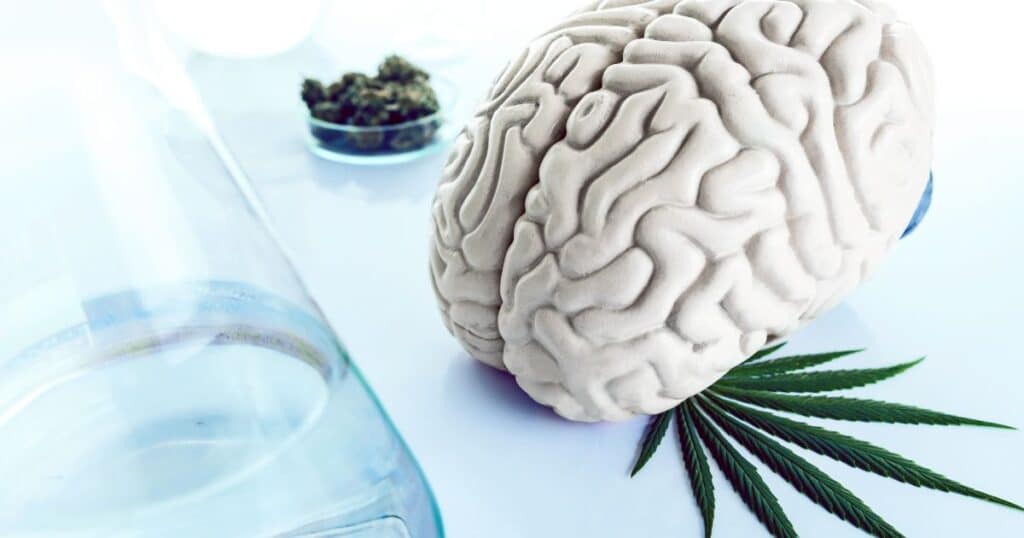As the world continues to explore the therapeutic potential of marijuana, new research is shedding light on the lesser-known components of cannabis and their remarkable potential in treating neurological disorders. In a recent scientific review titled “Unveiling the Potential of Phytocannabinoids: Exploring Marijuana’s Lesser-Known Constituents for Neurological Disorders,” researchers have highlighted the emerging role of minor phytocannabinoids like THCV, CBDV, and CBG in managing conditions such as Parkinson’s and Alzheimer’s.
What are Phytocannabinoids and Their Interaction with the Endocannabinoid System
Phytocannabinoids are naturally occurring compounds in the cannabis plant, distinct from the more commonly known cannabinoids like THC and CBD. Among the lesser-known compounds, such as THCV, CBDV, and CBG, which were highlighted in the review, contribute to the distinctive profile of cannabis and its therapeutic potential.
Phytocannabinoids interact with the body’s endocannabinoid system (ECS), a complex network of receptors and signaling molecules vital for maintaining homeostasis. The ECS plays a crucial role in regulating various physiological processes, including mood, appetite, pain, and memory.
Delving into Neuroprotective Phytocannabinoids
The scientific review emphasizes that while THC and CBD have been extensively studied, cannabis contains a diverse array of lesser-known phytocannabinoids, terpenes, flavonoids, and alkaloids. These compounds demonstrate pharmacological activities that could offer therapeutic applications for neurological disorders. Their antioxidant, anti-inflammatory, and neuromodulatory effects position them as promising agents for treating neurodegenerative diseases, according to the authors.
Neurological disorders, such as Parkinson’s, Alzheimer’s, and epilepsy, pose significant global challenges. Current treatments primarily focus on managing symptoms rather than addressing underlying disease mechanisms. This gap in treatment efficiency is where phytocannabinoids could play a pivotal role, authors of the review noted.
The review found evidence of neuroprotective effects and other beneficial outcomes from minor cannabinoids in conditions like epilepsy, Parkinson’s, Alzheimer’s, Huntington’s disease, and substance and alcohol use disorders.
Role of Minor Cannabinoids in Epilepsy
One of the key findings of the review is the potential of minor phytocannabinoids in managing epilepsy. CBD, for example, has been shown to reduce the amplitude of epileptiform local field potential bursts in specific brain regions.
This effect is significant as it suggests a mechanism independent of traditional cannabinoid receptors, possibly involving serotonergic pathways. CBD has been authorized by the FDA and European Medicines Agency for certain epilepsy syndromes, highlighting its effective seizure control.
THCV, another promising phytocannabinoid, functions predominantly as a CB1 receptor antagonist. The review highlights its ability to control calcium movement in epithelial cells and adjust inhibitory signaling in the brain. THCV’s anticonvulsant action, primarily through increasing GABA release, presents a novel approach to epilepsy treatment.
CBDV, found in high quantities in certain cannabis strains, has demonstrated antiseizure effects in animal models. Its potential extends to improving sociability and overall health in genetic models of epilepsy. However, the authors emphasize that further studies are needed to fully evaluate the role of these phytocannabinoids with epilepsy and their potential benefits.
Treating Neurodegenerative Diseases with Lesser Known Cannabinoids
Phytocannabinoids not only hold promise for epilepsy but also for managing neurodegenerative diseases like Parkinson’s and Alzheimer’s, according to the scientific review, which details recent studies showing CBD’s efficiency in alleviating symptoms and providing neuroprotection in Parkinson’s disease. The anti-apoptotic effects of CBD, mediated by different signaling pathways, give the potential for slowing disease progression.
THCV has been shown to rescue neuron loss and improve motor impairments. Its effects, likely mediated through CB2 receptors, highlight its potential as a non-psychotropic therapy for Parkinson’s.
CBDV has also demonstrated protective effects against neuronal injury and degeneration in Parkinson’s models. By blocking the aggregation of harmful proteins and supporting neuron survival, CBDV could potentially contribute significantly to future Parkinson’s treatments.
CBG, though less researched, has shown promise in reducing inflammation and neuronal damage in Parkinson’s models. Authors said that its action on peroxisome proliferator-activated receptors (PPAR-γ) instead of cannabinoid receptors highlights the various ways phytocannabinoids can have an impact.
In Alzheimer’s research, the review discusses CBD’s potential to prevent amyloid plaque formation and neurofibrillary tangle development, which is a clear sign of the disease. By enhancing key signaling pathways, CBD supports brain health and neurogenesis, which the authors note makes it a compelling candidate for Alzheimer’s management.
Although less explored, THCV and CBDV, the review says, hold potential for Alzheimer’s treatment due to their neuroprotective profiles observed in other models. Future research into their effects on Alzheimer’s pathology could unlock new therapeutic avenues.
Future of Phytocannabinoids in Neurological Disorder Treatment
Phytocannabinoids may represent a promising frontier in the treatment of neurological disorders. Their varied pharmacological properties, combined with recent advancements in understanding their mechanisms, provide new hope for patients suffering from debilitating conditions. However, as highlighted by the authors of the review, extensive research is essential to transition these compounds from the laboratory to clinical practice.
The potential of cannabis goes well beyond the well-known THC and CBD. Lesser-known phytocannabinoids such as THCV, CBDV, and CBG show promise for addressing a range of neurological disorders. Their neuroprotective, anti-inflammatory, and antioxidant properties open up exciting new avenues for the development of innovative therapies.
















